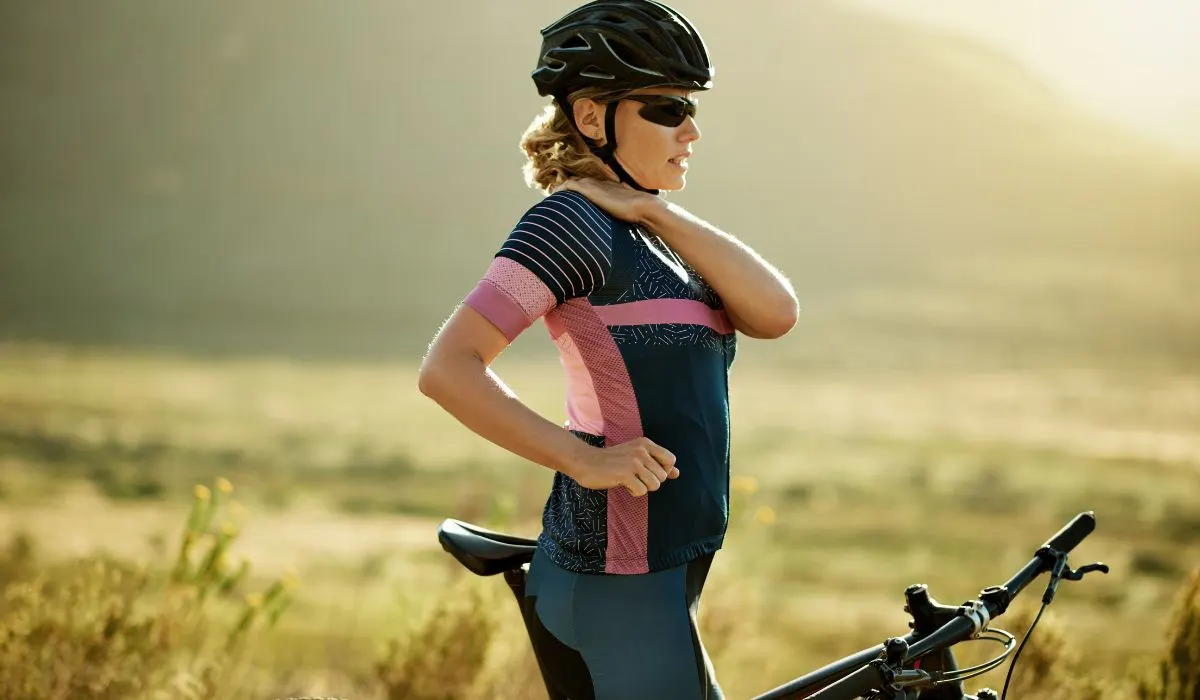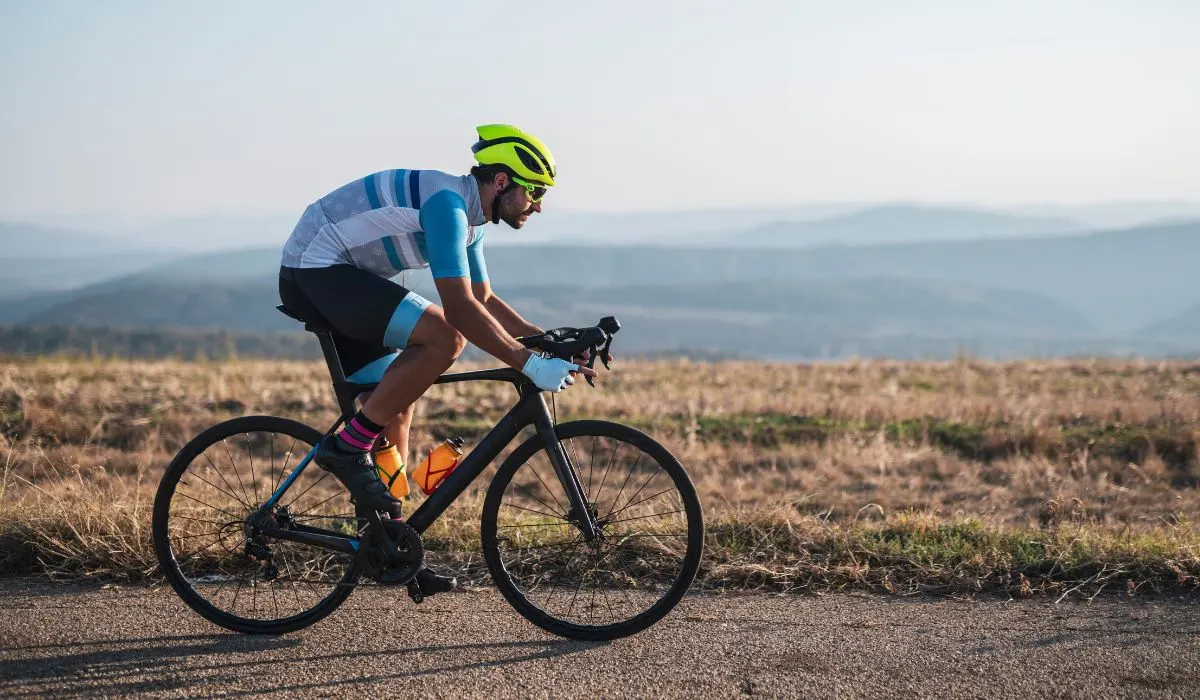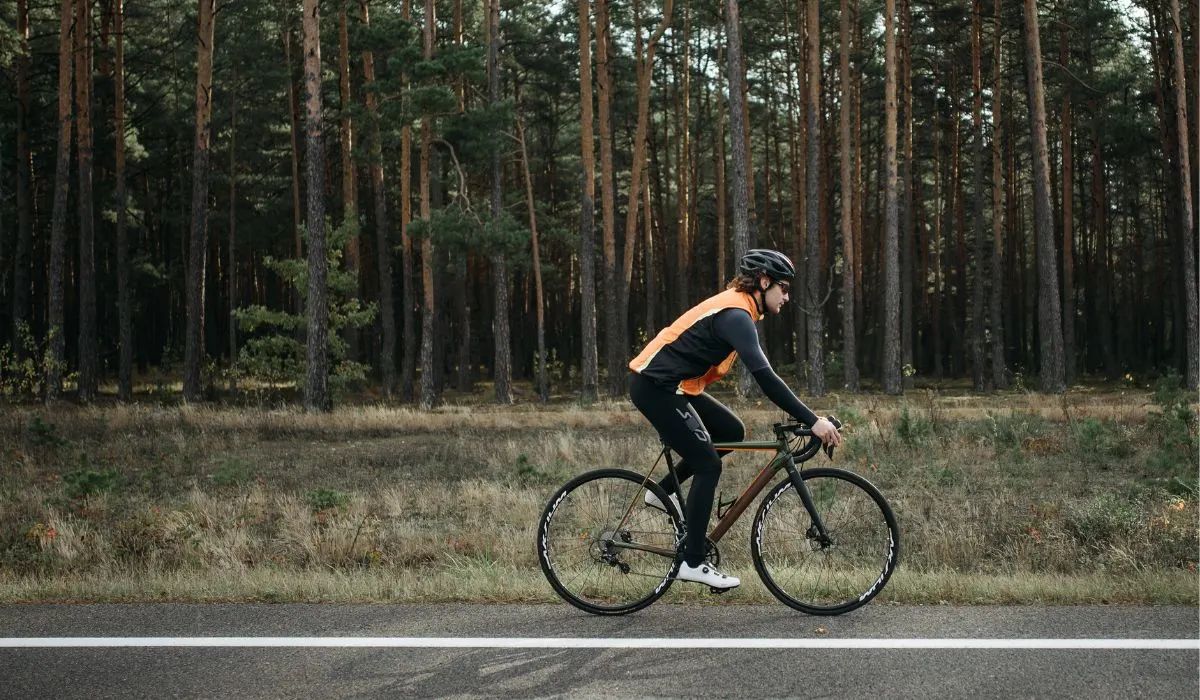
When it comes to cycling, there will be some degree of pain. However, it will be good pain like the burning one gets from muscles working to their total limit or the burning in the lungs when you’re really putting in the effort and pedaling at a fast pace. However, there is the complete opposite, which is bad pain, like back pain. So, is cycling bad for your back?
Cycling is not bad for your back. In fact, it is much better on your back as you are typically putting the entire body’s weight on the pelvis. However, incorrect posture can be bad for your back when you are cycling. Likewise, the correct frame fitting is imperative to avoid back problems.
Back pain when cycling isn’t the best. In fact, it will hamper and take away from your riding experience. Many cyclists suffer from back pain, whether it is during the ride or afterward. This is typically due to bad posture when cycling. However, sometimes it cannot be helped when a rider needs to hunch over to reach the handlebars. Here’s whether cycling is bad for the back and a back-friendly cycling guide.
All About Whether Or Not Cycling Is Bad For Your Back
The most adequate exercise for the whole body is cycling. It is beneficial as it strengthens and stabilizes:
- back muscles
- shoulders
- hips
- spine
Unless you suffer from a pre-existing ailment that makes cycling difficult, cycling shouldn’t damage your back.
Good posture is crucial if you want to ride a bike without experiencing back pain. People often overlook the fact that every activity we engage in has a posture that is considered suitable for that activity. When riding, bad posture might result in back pain.
Suppose bad posture is in cycling. In that case, a terrible posture is when your head is overly bent or your back is hunched over. If riding is the source of back pain, it can be avoided by maintaining good posture. You can ride slowly and smoothly on the flat road if you have additional back discomfort or are in the healing process.
A cyclist with good posture may change how far away from the handlebar they are when the road is at an incline. Additionally, it enables him or her to modify the rate at which they are pedaling. Your back must be arched and not sag between your shoulders and hips.
Back pain is more likely to occur while you are upright and using high handlebars. This results from the inability of a straight spine to withstand road imperfections.
NOTE: Get professional advice if you have back pain when cycling. If you happen to experience back pain when cycling, you might be able to cycle without experiencing any pain by performing some rehabilitation exercises.
If cycling is new to you, you might feel sore simply from working new muscles. This is natural and will fade away as you gain strength and endurance if the bicycle suits your body. There are good and poor ways to hunch your shoulders and back while riding a bike.

A pro rider can hunch for extended periods without experiencing any adverse effects if they have:
- a good bike fit
- adequate muscle control
- good flexibility
Back issues can result from skeletal or muscular misalignment. These could be from the:
- knees
- feet
- ankles
- hips
Here’s A Guide To Back-Friendly Cycling
There are plenty of ways to cycle and ensure that your back isn’t under stress to avoid any tightness or pain. Often, riders may not realize the strain they are putting on their back until they start to feel discomfort and even pain.
The goal should be not to let things get to that stage. Therefore it is imperative to be proactive and find ways to cycle that will ensure that no pressure or stress is being placed on your back.
Fortunately, there are several ways to limit the strain that can be placed on your lower back when cycling. Here is a back-friendly cycling guide:
The Right Frame Size Will Be More Friendly On Your Back
It’s imperative to have the correct frame size for yourself. This is because a bike that is too big will stretch you out in the front. This isn’t ideal as it will immediately put pressure and stress on your lower back.
Any frame that encourages an extreme aero stance and excessive stretching is likely to exacerbate back strain. Should this be a problem, it is better to look for a compact frame that will keep you as vertical as possible without sacrificing aerodynamic performance.
If your bike is not fitted correctly, you may suffer pain in your:
- spine
- hips
- butt
- knees
- shoulders
- neck
Take your new bike to a reputable bike shop to get it appropriately adjusted after purchase. The typical price range for this service is between $0 and $100, plus any additional parts.
This may seem slightly costly, but it will be worth it in the end. Furthermore, it would be helpful if the frame could support broader tires. It is advantageous to use wider tires operated at lower pressures, such as tubeless tires like these that are sold on Amazon, as this will function as suspension.
Regardless of the frame selected, you need to be appropriately positioned and fitted. Changing the frame may not be ideal if you already have a bike. However, fear not, as there are several things you can change that will give you the same results.
Ensure The Saddle Is The Appropriate Height
The saddle height on a bike plays a crucial role in whether or not you have back-friendly cycling. If the saddle is extended too high, the hips will rock side to side. When this happens, unnecessary pressure will undoubtedly be put on your lower back.
To determine if the saddle is the correct height, do the following.
- Sit on your saddle nice and level.
- Place your foot on one pedal and straighten the leg out.
Your foot must be able to rest on the pedal with the leg completely locked out. When the shoes are on, it should correlate to when you are riding the bike when your knee will have a slight bend at the bottom of the pedal stroke.
Adjust Your Riding Position And Use Butterfly Handlebars
Stretching and adjusting your riding position on the saddle, as well as occasionally getting out of the seat, are equally as vital as the bicycle you ride. Due to the variety of hand positions offered by butterfly handlebars, otherwise known as touring handlebars, you can find them more back-friendly when cycling.
You’ll also notice that shifting hand positions regularly while riding will reduce any tightness in the:
- neck
- shoulders
- upper back
Consider Getting A Commuter Or Beam Bicycle
Generally, people will be more comfy and upright when riding a hybrid road or mountain bike called a commuter bicycle. These typically have a suspension seat post and front suspension.
The most comfortable option is a mountain bike with front and rear suspension. Beam frame bicycles may benefit back problems if finances are not an issue.

Build Up Your Cycling
You mustn’t just jump straight into rigorous cycling. Building up to that point is crucial to give your body time and the chance to adapt to cycling and get stronger. If you are new to cycling or haven’t cycled in ages, start introducing it gradually.
Ensure that you also do strength and conditioning work at the same time. Body position is essential when it comes to cycling. As riders typically tend to be in a closed-hip position on a bike, all while using their legs to put out a significant amount of force to move the bike; it isn’t surprising that experience is needed on the bike.
Therefore, building up strength and endurance is imperative. As much as you may want to make it aggressive from the get-go, it is better to start with comfort than go completely aero. Simply put, increase your cycling gradually instead of going too hard and injuring your back.
Increase The Cadence Of Your Bicycle
Gearing is also something that can either ensure you have back-friendly cycling or experience back problems. Therefore, if the gear is too big, you will need to put more force through your legs and consequently through the lower back. The key is increasing the cadence to remove some of the force.
Conclusion
If the bike fits you adequately, there’s no way that it can be bad for your back. Walking puts more strain on the lower back than cycling does. It can’t be stressed enough how important bike fit is. For instance, if you are riding ramrod straight, every road shock would be felt in your spine.
Spend the money to have your bicycle custom-fit if you wish to ride and have no lower back pain. At first, riding will feel odd, but as you get used to it, you’ll be capable of traveling farther and faster. You’ll also feel amazing when you’re done.
You might also be interested in:
